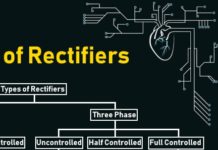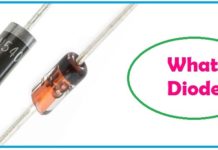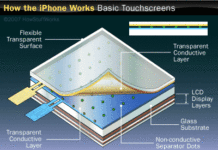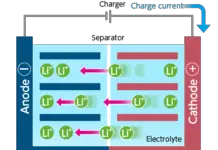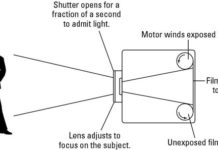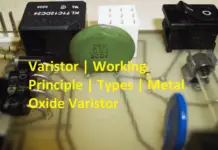HOW LED WORKS?
In day today life we come across many applications of LED’s such as street lights. LED torches etc LED is drive from PN junction diodes.
These diodes operated in forward bias mode emit light in all directions. Thus symbol of LED is shown in two arrows of emission of light.
LED has the PN junction with two terminals anode (A) and cathode (K) as normal PN junction diode.
It is developed by three semi-conductor layers on the substrate layer out of the three semi-conductor layers one is P-type layer having holes as majority charge carriers. Other layer is having N-type layer having electrons as majority carriers. In between these two layers are lies the third layer is active region. This is active region emits the light when electrons and holes recombine this region.
Working of LED
As the active region emits the light in all the directions basic clear structure shown is kept in cup structure indicated in diagram. To identify the anode and cathode terminals of the LED the special arrangement is made construction itself is seen carefully in the cup between two metal strips. Small metal strips acts as anode terminal and big metal strip acts as a cathode. This is how practical LED looks like.
Before going for working lets want to study about valance band and conduction band.
In normal conditions electrons revolve around the nucleus. In circular orbits they have very low energy and are bonded to the nucleus only. These electrons reside in the lowest energy band known as the valance band.
When in the valance band electrons do not form chemical bond with other atoms nor can’t carry the current. to become free and carry the current electrons should come out from the valance band by acquiring the energy. Reside in the high energy band is known as the conduction band only those electrons which are in conduction band carry the current.
When forward biased electron from N-type semiconductor material and holes from P-type semiconductor materials cross the potential barrier region and recombine in the active region.
These electrons in the conduction band and holes are in the valance band. As the energies of conduction band and valance band are different. When electron hole recombination takes place the energy equals the difference between two energies radiated in the form of light. This difference is known as band gap or forbidden gap energy.
And also this effect is known as electroluminescence. This forms the working principle of LED’s
Normally LED’s RED, GREEN, YELLOW, BLUE, ORANGE colours available
For LED’s silicon and germanium are not used as their forbidden gaps do not allow light emission in the visible spectrum (wavelength is too low).
Thus LED’s are made up of gallium arsenide (GaAs) or gallium phosphide etc.
Biasing of LED
LED is biased as in same way of PN junction diode are biased. Anode is connected to positive side of supply and cathode is connected to negative side of the supply. Resistor Rs is always connected in series with the LED to limit the current flowing through it and protect from damage due to excess current,
The voltage drop across conducting LED in the range of 1.2V to 3.2V depending on the material used. LED has extremely low breakdown voltage of the order of 3 to 10 V. they do not subjected to high reverse voltages.
Advantages of LED
- It is small size and light weight
- Available in different spectral colours
- Have longer life as compared to lamps
- It can be easily interfaced with other electric circuits
- Its operating speed is height ( takes only 1 microsecond to turn ON/OFF)
Disadvantage of LED
- Output pressure is affected by changes in temperature
- Luminous effecting of LED is low
- LED’s get easily damaged due to over current.












